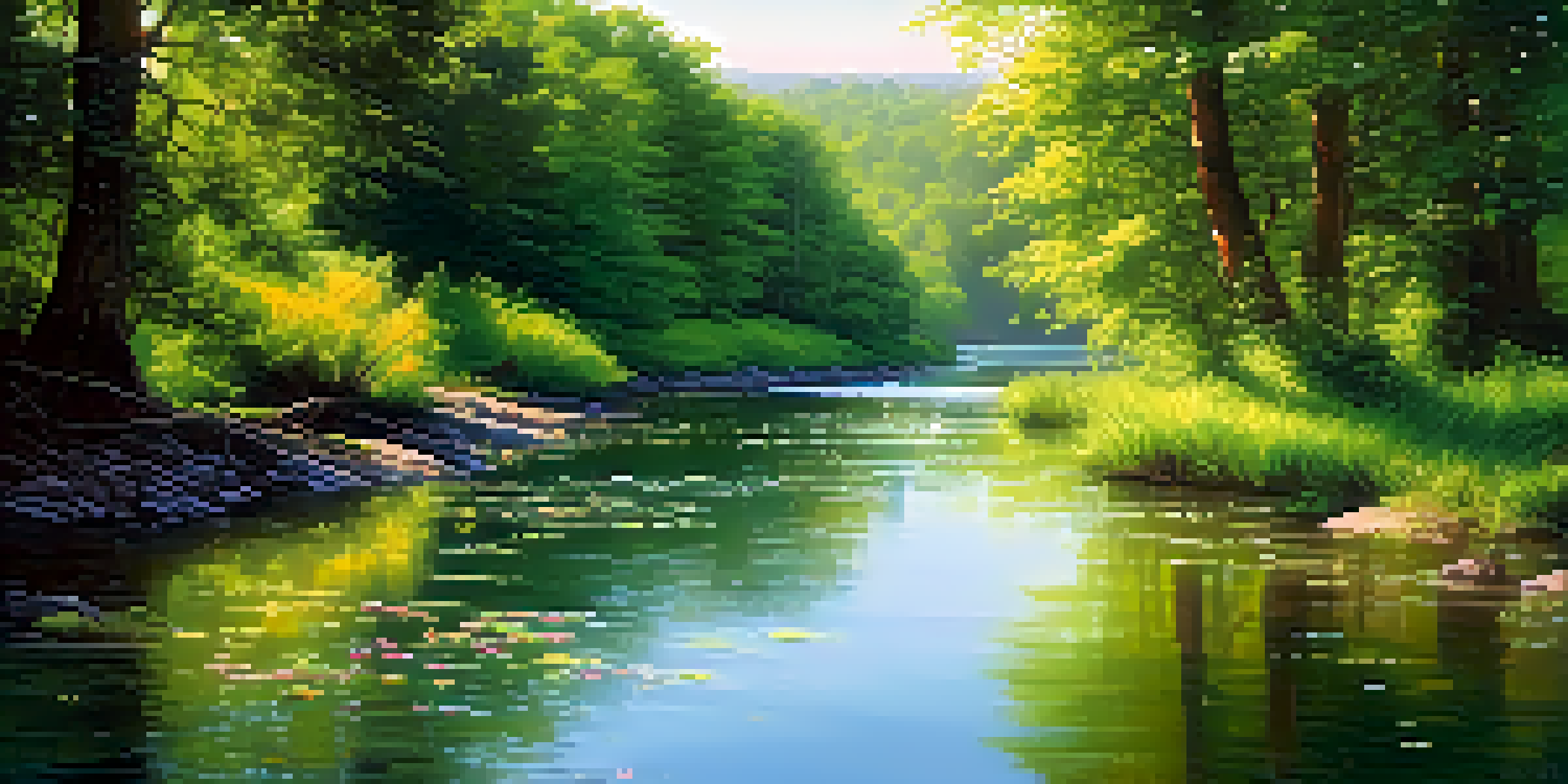Influence of Nature: Carving Inspired by Natural Elements

The Beauty of Nature: An Inspiration for Artists
Nature has always been a wellspring of inspiration for artists, particularly carvers. From the intricate patterns of leaves to the rugged textures of bark, these natural elements provide a rich tapestry from which creativity can flow. Artists often find themselves in awe of nature's designs, longing to replicate or interpret them through their work.
Art is the most beautiful of all lies; it is the most truthful of all truths.
This connection to the environment not only fuels artistic expression but also encourages a deeper appreciation for the world around us. When an artist carves a piece that reflects the beauty of nature, they invite observers to engage with these elements on a more personal level. It's as if the artist is saying, 'Look at this marvelous world we live in!'
Moreover, this influence of nature can evoke emotions and memories, making the artwork resonate more deeply with viewers. Whether it's the calming effect of a flowing river or the grandeur of a mountain range, these natural inspirations are powerful tools that can transform simple materials into evocative pieces of art.
Materials: The Heart of Carving Inspired by Nature
The materials chosen for carving play a crucial role in how nature's influence is expressed. Wood, stone, and bone, for instance, each carry their own unique properties and textures that can mirror the elements of nature. A smooth piece of driftwood might remind an artist of the gentle curves of a riverbank, while rough granite could evoke the strength of a mountain.

Selecting the right material not only affects the final appearance of the piece but also influences the carving techniques used. For example, softer woods can be intricately detailed, allowing for fine representations of natural elements like flowers or feathers. In contrast, harder stones might be better suited for bold, abstract forms that capture the essence of nature's raw power.
Nature Inspires Artistic Expression
Artists draw profound inspiration from nature, transforming its beauty into captivating works that resonate emotionally with viewers.
This symbiotic relationship between material and inspiration showcases the versatility of carving as an artistic medium. Each choice reflects the artist’s vision, turning a simple block of wood or stone into a narrative that speaks to the beauty and complexity of the natural world.
Techniques: Carving Methods Inspired by Nature
Carving techniques can vary widely, influenced by the natural forms that artists strive to capture. Traditional methods, like whittling or chiseling, allow for a direct engagement with the material, making the act of carving almost meditative. Artists often find that as they work, their hands intuitively mimic the shapes and lines found in nature.
Nature always wears the colors of the spirit.
For instance, the technique of relief carving can bring to life the gentle rise of a mountain or the delicate flutter of a butterfly's wings. Similarly, sculpting can allow an artist to explore three-dimensional representations of natural elements, creating pieces that invite viewers to walk around and interact with the art. This dynamic experience is akin to walking through a forest, discovering new perspectives at every turn.
Ultimately, these techniques serve as a bridge between the artist's vision and the audience’s experience of nature. Each stroke of the tool is a conversation with the material, a dialogue that echoes the natural world and invites others to see it through the artist's eyes.
Symbolism in Nature: Beyond the Surface
Nature is rich with symbolism, and many carvers draw upon these deeper meanings to infuse their work with additional layers of significance. For instance, a carved tree might symbolize growth, resilience, or even life itself. By choosing specific natural elements, artists can convey messages or themes that resonate with viewers on an emotional level.
This symbolic approach allows artists to create pieces that are not only visually stunning but also thought-provoking. It invites observers to reflect on their own experiences and connections to nature, perhaps evoking memories of a childhood spent exploring the woods or a serene moment by the sea. In this way, art becomes a vehicle for shared experiences and collective understanding.
Materials Shape Artistic Vision
The choice of materials in carving profoundly influences the final piece, reflecting the artist's vision and the essence of the natural world.
Moreover, this exploration of symbolism deepens the relationship between the artist and their audience. It encourages conversations about the meanings behind the work and fosters a greater appreciation for the complexities of nature and the human experience.
Cultural Influences: Nature in Global Carving Traditions
Across cultures, nature has served as a fundamental source of inspiration in carving traditions. From the intricate carvings of totem poles by Indigenous peoples to the delicate woodwork seen in Japanese temples, each culture interprets nature through its own lens. These unique perspectives enrich the global tapestry of carving practices.
Artists often incorporate local flora and fauna into their work, creating pieces that are deeply rooted in their cultural heritage. For example, a carver in Hawaii might use native wood to create a representation of a honu, or sea turtle, which holds cultural significance as a symbol of longevity. This not only honors the natural world but also preserves cultural narratives for future generations.
Such cultural influences highlight the universal connection between art and nature. They remind us that while our experiences may differ, the beauty of the natural world is a common thread that binds us all.
Sustainability: Carving with Nature in Mind
As the world increasingly recognizes the importance of sustainability, many artists are finding ways to carve with nature in mind. This approach involves sourcing materials responsibly and ensuring that the natural environment is respected and preserved. For example, using reclaimed wood or sustainably harvested stone can significantly reduce the environmental impact of carving.
By prioritizing sustainability, artists not only contribute to the well-being of the planet but also create a dialogue about the importance of protecting natural resources. Their work serves as a reminder that art can be both beautiful and ethical, encouraging others to consider the environmental implications of their own creative practices.
Sustainability in Art Practices
Many artists prioritize sustainability in their carving practices, advocating for responsible material sourcing to protect the environment.
Ultimately, carving inspired by nature can lead to a greater awareness of our connection to the environment. As artists advocate for sustainable practices, they inspire a cultural shift towards more mindful consumption and appreciation of the natural world.
The Future of Carving: Nature as a Continuous Muse
As we look to the future, nature will undoubtedly continue to serve as a muse for carvers around the world. With advancements in technology and techniques, artists are finding innovative ways to translate their inspirations into captivating works of art. For instance, digital carving tools allow for precise detailing that can enhance the representation of natural elements.
Moreover, the growing interest in environmental issues may fuel a resurgence in nature-inspired art. As more people seek connections to the natural world, carving can play a vital role in shaping that relationship, reminding us of the beauty and fragility of our environment. Artists can leverage this trend to create pieces that not only celebrate nature but also advocate for its protection.

In this evolving landscape, the influence of nature on carving will remain strong. By embracing both tradition and innovation, artists can continue to explore the depths of their creativity, crafting pieces that inspire others to appreciate and engage with the natural world around them.